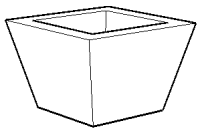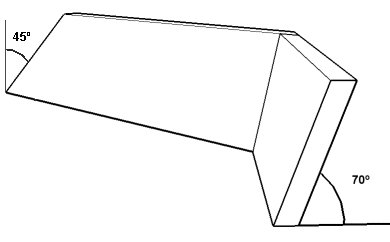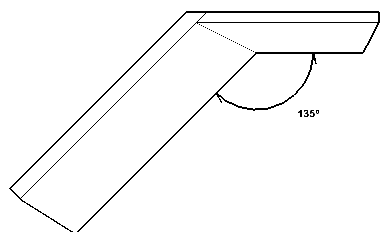| Compound Angle Calculators | |
|
I recently had a woodworking project with compound angles. A quick search of the web for an online calculator quickly showed that, even though there are plenty of great miter calculators out there, I wasn't able to find to for calculate a butted joint at a compound angle. After a bit of research, I discovered the possible reason why \96 calculating a butted joint is much more complicated than calculating a mitered joint. Thanks to this website: http://www.sbebuilders.com, and also to Joe Bartok whose archived treasure trove of timber framing math was a huge help. |

|
|
These two calculators were designed with a tablesaw in mind, although you could use it with any tool.
Just adjust angular orientation accordingly. Notes on angles:
Input: Included angle refers to the angle the two pieces meet in plan view. The angle is measured between the two pieces \96 90° is a 4-sided box, 120° is 6-sides, etc.
Results: Bevel is given in degrees from vertical, when the piece is laying flat on a horizontal plane (like on the top of a saw table). 0° a square edge (no bevel), 45° is a piece cut with a 1:1 bevel. Bevel is the angle you'd set your blade to.
Butted compound angles. Butted compound angles are more complex than a simple mitered joint. Unlike a mitered joint where the two pieces to be joined are tipped at the same angle, in a butted joint, the two pieces to be joined can have different angles.
|
||||||||||||
|
It doesn't actually matter which piece butts and which caps,
so in the calculator, they are simply referred to as A and B. If you're interested in playing or checking my work (please!), here are the formulas I used:
For the miter:
For the butted joint: If either of these values exceed 90°, I subtract from 180 to provide a negative angle that indicates the angle goes the other way. Bevel angle: asin( cos(slopeA) * cos(slopeB) - sin(slopeA) * cos(slopeB) * cos(corner_angle)) A spreadsheet version is available as well. |
This page is offered "as-is" -- I cannot provide support, and you use it at your own risk. If you find a mistake, I'd love to hear about it. If it doesn't do what you want, go ahead and make your own, like this excellent page: Bjorn Jansson's Compound Miter Saw Calculator (his does butted joint too!)


